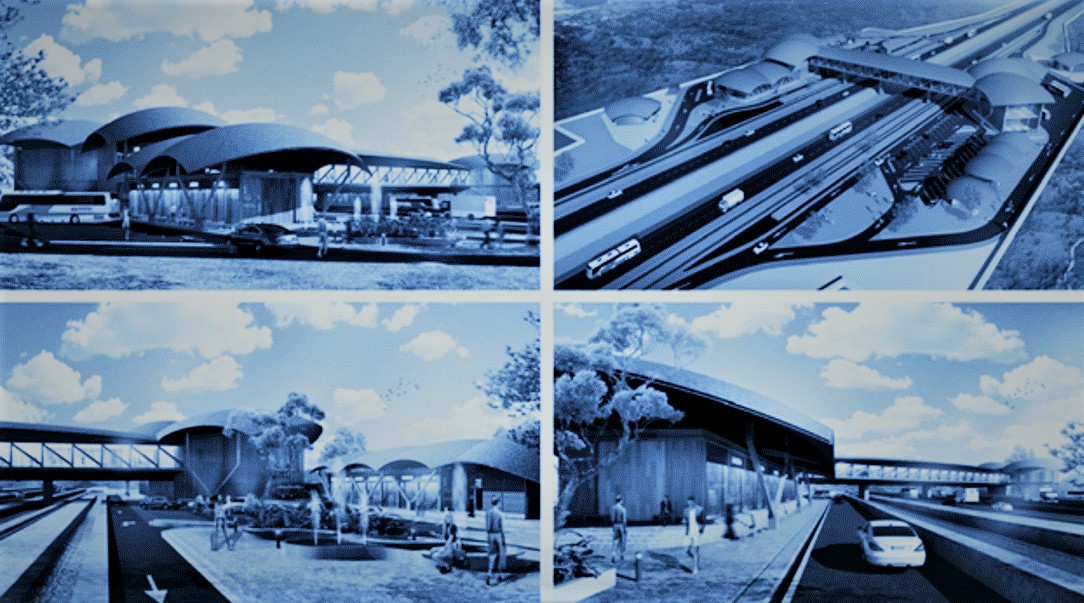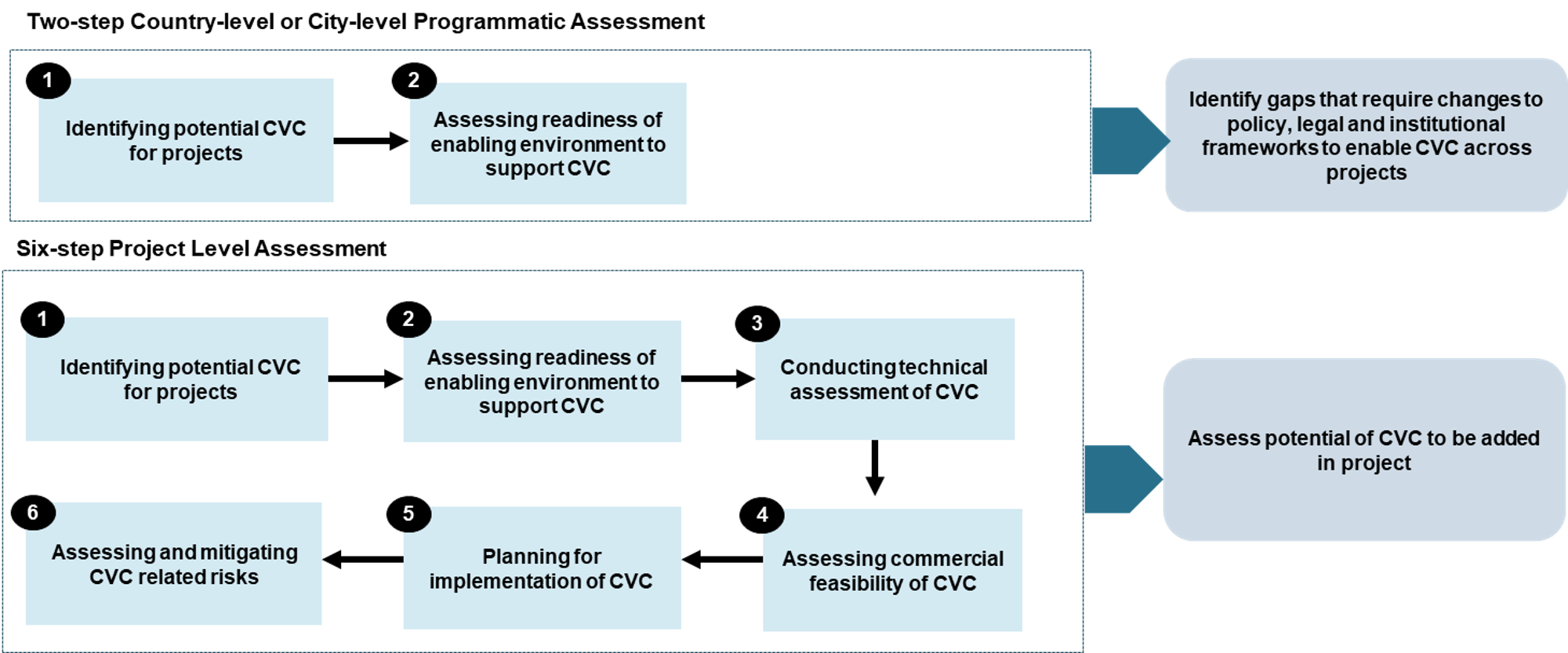Applying CVC in Infrastructure Projects
Governments should consider possible innovative funding opportunities during early planning processes (at program and project level) and project preparation stage (at the Pre-Feasibility Study or Outline Business Case stage), to make sure that planning does not unnecessarily limit, or fail to identify and capture CVC opportunities.
When making an early stage CVC assessment, a number of practical questions need to be raised on a preliminary basis to identify key demand, risk and challenges, and to avoid over-optimism. The Hyderabad Metro PPP project in India (more on this case in Box 2) is an example of a project that suffered from optimism biases, assuming more advantages from CVC than the project can deliver.
While early CVC assessment improves likelihood of success and value of CVC revenues, in practice, projects may require just-in-time design leaving little time for early CVC assessment. CVC may need to be incorporated in a project at different stages of project preparation or even during implementation. The timing for integrating CVC into a project can thus vary based on specific circumstances of each project.
Three potential scenarios for incorporating CVC are:
Scenario 1: Early consideration of CVC in project planning and design.
CVC opportunities can be identified at project planning and design stage. This scenario is ideal as CVC can be optimized at early design stage and the Project Owner has the flexibility to structure the contract that fits best with the project’s characteristics and in a way that ensures effective coordination amongst project contracts.
Scenario 2: Including CVC opportunities during the PPP process.
In some cases, CVC opportunities might be identified after the concessionaire for the core service has been selected or when a PPP contract for core service has already been signed and the project is already under implementation, or may be proposed by a bidder where the Project Owner had not contemplated CVC. While not the most efficient manner to add CVC, this approach is often the most practical. The parties will need to amend the project contracts to allow for the CVC, regulate its delivery and share revenues.
Scenario 3: Reverse engineering CVC into an existing project
In some cases, the Project Owner may realize the potential for CVC opportunities after project works have already been completed. In such case, CVC can be incorporated in the project by reverse engineering CVC into the existing project design. This scenario will be easier if the identified CVC opportunity does not require major change to existing project design. As above, the parties will need to amend the project contract, regulate its delivery and share revenues.
Consideration should be given to whether to include commercial activities and core services in a single contract or separating them into two (or more) contracts. Having two operators in one project can benefit the Project Owner if the operator responsible for core services has strong technical expertise but limited experiences with commercial activities. A second operator would manage commercial activities under a CVC contract. However, this scenario can lead to lack of coordination or competing interests if the contractual terms for both contracts are not fully aligned. See Box 4 for an example where CVC is tendered as a separate contract from the contract of the core service operator.
Box 4: CVC contract is issued separately from core service
Intercity Motorway
Background: Rest areas are an essential part of any Intercity Motorway. They are designed to enhance the convenience of motorway users, increase road safety, and provide employment and revenue generating opportunities for businesses, such as retail and food and beverage (F&B), which can benefit from a steady flow of demand from the traffic on the motorway.
Structuring of CVC in the project: The feasibility study report for the motorway was first conducted in 2003, during which opportunities for commercial rest areas were identified. The motorway was constructed with plots of land specifically allocated for future rest areas. The operation and maintenance of the motorway was tendered out as a PPP contract, the bidder with expertise in transport system operation was selected and a PPP contract signed during 2020-2021. At around the same time the PPP for core services was being prepared and tendered, the Project Owner conducted a separate feasibility study for the rest area component. The PPP for the rest area component is structured as a separate contract and expected to be tendered in 2024. The selection criteria for the rest area operator puts emphasis on commercial expertise.

Source: Department of Highways, Thailand1
The Guidelines for applying CVC in infrastructure projects (the ‘Guidelines’) have been designed to help planning agencies/MOF/PPP Unit and Project Owners to consider CVC across portfolio of projects or in individual projects.
Objectives
The Guidelines provide governments (national, regional and local) an approach to identify, consider and analyse potential CVC opportunities in infrastructure projects. The Guidelines intend to help answer simple questions:
-
Are CVC opportunities allowed to be included in the project? What would need to change to allow CVC?
-
Which CVC opportunities are potentially relevant?
-
How can CVC opportunities be included in the project?
-
Of those CVC opportunities, which are most technically, commercially and politically viable?
-
Is it commercially sensible to include CVC opportunities in the project? Would the benefit from CVC opportunities outweigh the cost?
How to use the Guidelines
The Guidelines include six key steps as shown in Figure 13 and each step is discussed in further details in the following section. These steps include:
-
Identify potential CVC
-
Assess readiness of enabling environment to support CVC
-
Conduct technical assessment of CVC
-
Assessing commercial feasibility of CVC
-
Planning for implementation of CVC
-
Assessing and mitigating CVC related risks
The Guidelines can be used in a flexible manner as different parts of governments may have a different focus on CVC, for example:
-
For project-level assessment, if a Project Owner conducts step 1 and step 2 of the Guidelines and assesses that policy, legal and institutional preparedness suffers from specific short-comings, reforms to address those short-coming will need to be coordinated with project and CVC implementation, for example
-
short-comings may require the Project Owner to change the design of the CVC, possibly removing an element or changing its functionality;
-
other shortcomings are easier to resolve in a timely manner or are so fundamental to the project that they need to be resolved for the CVC to move forward. The Project Owner can resolve these shortcomings while the project is prepared. There is of course a risk that a delay in resolving the shortcomings might derail the CVC or the entire project. This risk of delay will need to be addressed in the CVC design and implementation;
-
Some short-comings are so fundamental and difficult that the whole CVC effort needs to be cancelled entirely or until the short-coming is resolved.
-
Where the Guidelines are applied for project-level assessment, the Guidelines should help Project Owners answer two fundamental questions in a lucid manner:
-
Does CVC have net commercial benefits, and so maximise potential revenues from the project?
-
And if so, is the CVC mechanism potentially implementable?
-
The Worked Examples in Annex 1 demonstrate how the Guidelines can be applied at the project level.
-
The Guidelines are not a substitute for a detailed feasibility study and are best used to supplement the full feasibility study.
-
The Guidelines only cover up to project preparation stage and do not include guidance on the bidding and implementation stages.
Figure 13: Six-step process to apply CVC in infrastructure projects

Footnote 1: Bang Pa-In – Nakhon Ratchasima Intercity Motorway Project (M6)
Subsections








